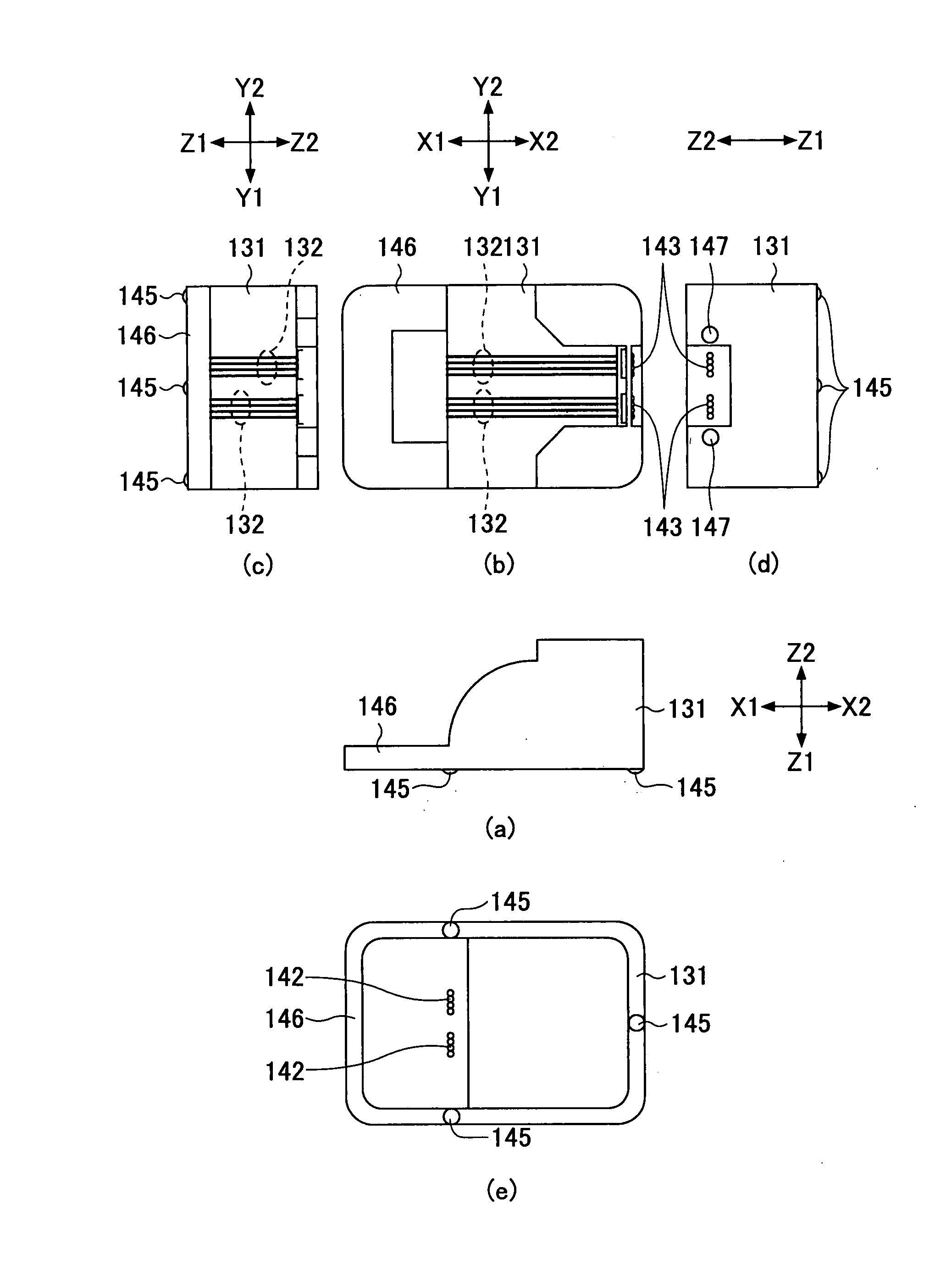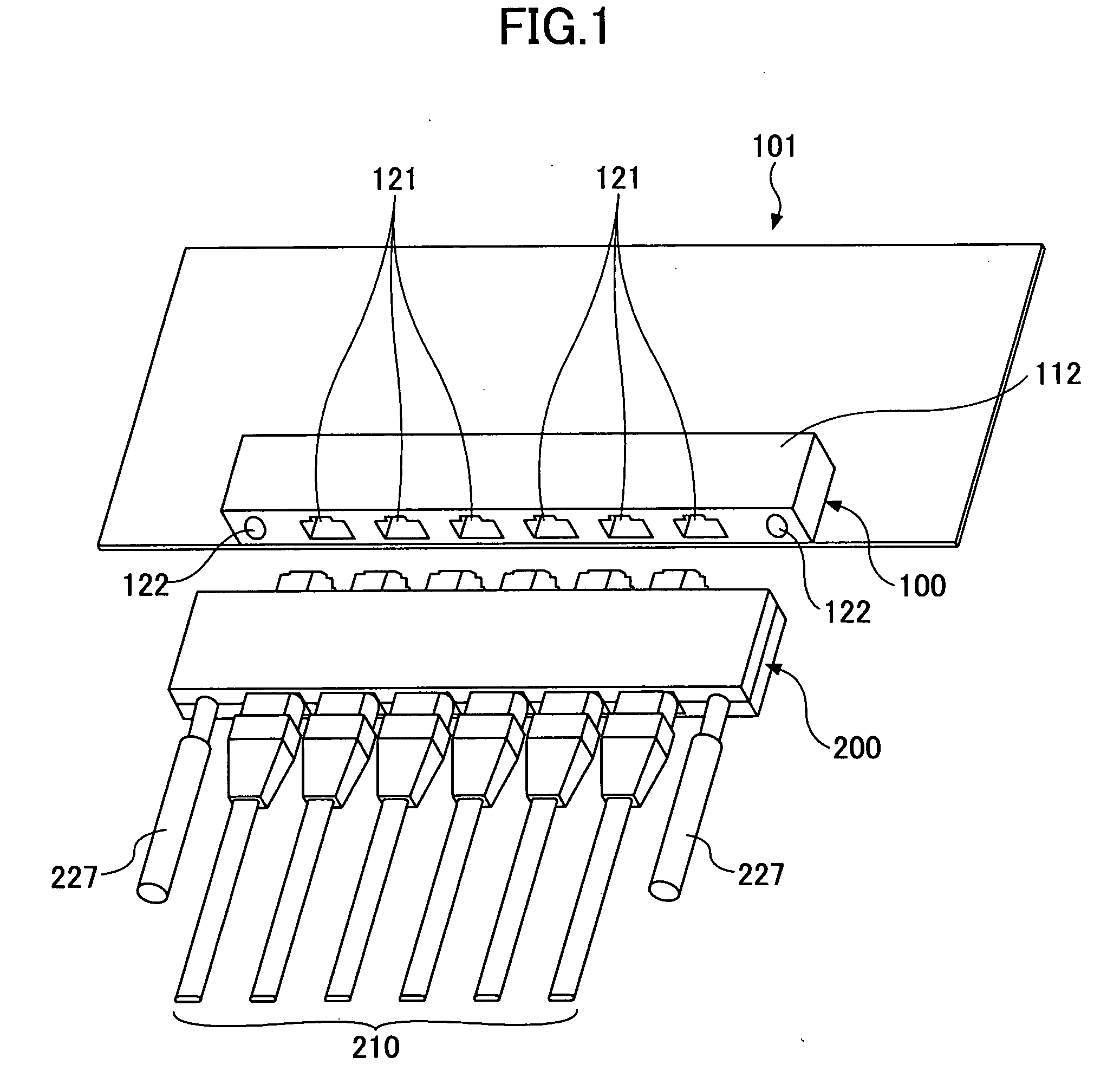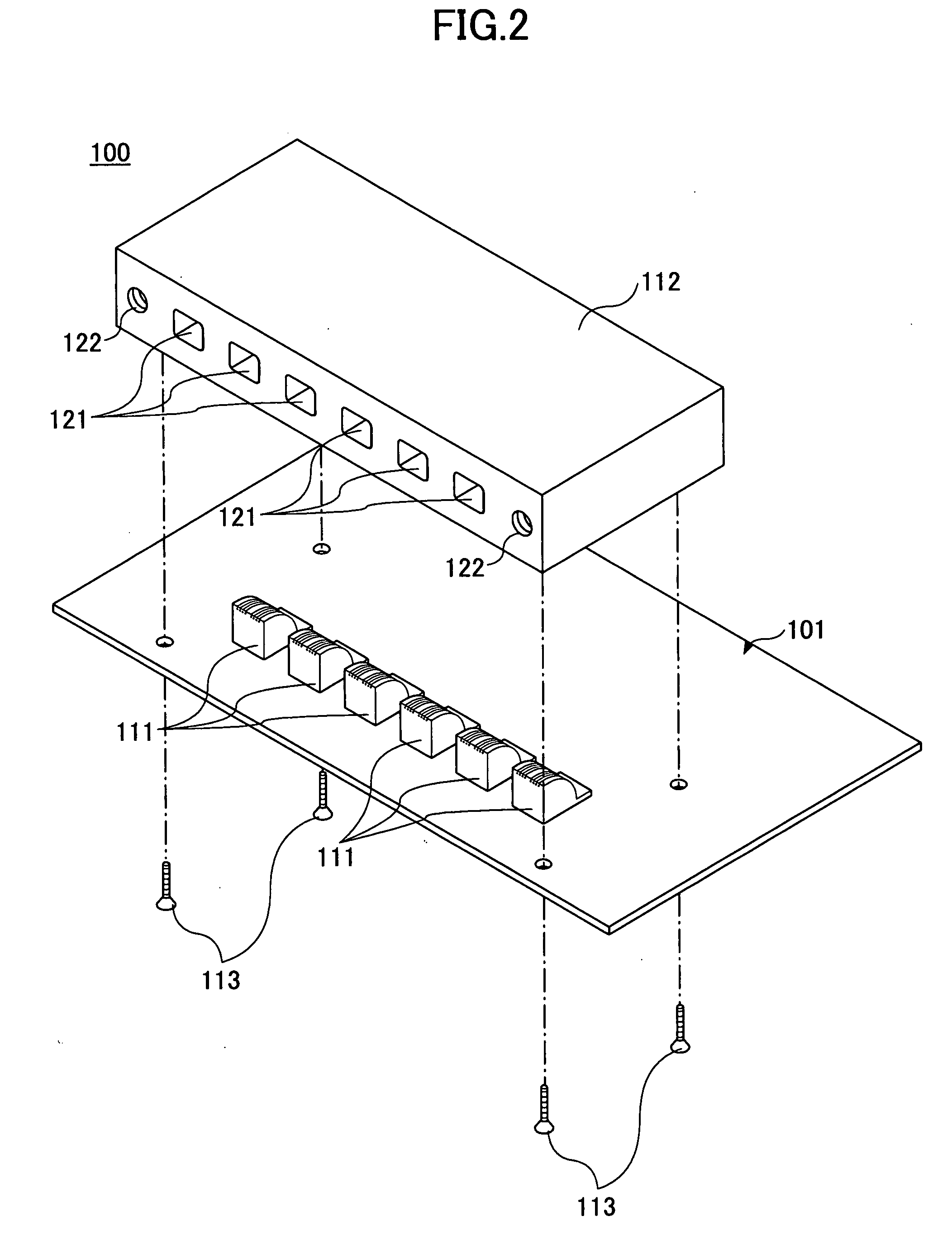Optical connector
a technology of optical connectors and connectors, applied in the field of optical connectors, can solve the problems of large inserting and extracting forces of optical transmission lines, the frame which holds the optical transmission lines becomes large, and the optical transmission lines cannot be easily inserted into or extracted from the optical connectors, etc., to achieve the effect of easy inserting and easy extraction
- Summary
- Abstract
- Description
- Claims
- Application Information
AI Technical Summary
Benefits of technology
Problems solved by technology
Method used
Image
Examples
first embodiment
[0045]First, a first embodiment of the present invention is described.
[0046]FIG. 1 is a perspective view of optical connectors according to the first embodiment of the present invention. FIG. 2 is an exploded perspective view of an optical socket connector 100 shown in FIG. 1.
[0047]As shown in FIGS. 1 and 2, the optical socket connector 100 is mounted on a printed circuit board 101, and an optical plug connector 200 is attached to the optical socket connector 100. Plural waveguide arrays (waveguide members) 111 are adhered on the printed circuit board 101 by resin and covered with a case 112. With this, the optical socket connector 100 is formed. The case 112 is secured to the printed circuit board 101 by screws 113.
[0048]Guiding sections 121 and screw holes 122 are formed in the front surface of the case 112. The optical plug connector 200 engages (is inserted) into the guiding sections 121. The guiding sections 121 guide tips of optical fibers of the optical plug connector 200 to ...
second embodiment
[0080]Next, a second embodiment of the present invention is described.
[0081]FIG. 8 is a perspective view of optical connectors according to the second embodiment of the present invention. In FIG. 8, a same element as that shown in FIG. 1 has the same reference number and the same description is omitted.
[0082]In the second embodiment of the present invention, an optical plug connector 300 is used and is directly mounted on a printed circuit board 102, and the printed circuit board 102 is directly connected to the printed circuit board 101 on which the optical socket connector 100 is mounted.
[0083]FIG. 9 is an exploded perspective view of the optical plug connector 300 according to the second embodiment of the present invention.
[0084]The optical socket connector 300 includes waveguide arrays 311, plug frames 312, a case 313, screws 314, and screws 315.
[0085]FIG. 10 is a perspective view of the waveguide array 311. In FIG. 10, a same element as that shown in FIG. 3 has the same referen...
third embodiment
[0094]Next, a third embodiment of the present invention is described.
[0095]FIG. 12 is a perspective view of optical connectors according to the third embodiment of the present invention. FIG. 13 is an exploded perspective view of an optical plug connector 400 shown in FIG. 12. In FIGS. 12 and 13, a same element as that shown in FIG. 8 has the same reference number and the same description is omitted.
[0096]The optical plug connector 400 is an adapter which connects the optical socket connector 100 mounted on the printed circuit board 101 with the optical socket connector 100 mounted on the printed circuit board 102. As shown in FIG. 13, the optical plug connector 400 includes plural waveguide arrays 411, plural plug frames 412, an upper case 413, and a lower case 414. In FIG. 13, two plug frames 412 are attached to the waveguide array 411.
[0097]FIG. 14 is a perspective view of the waveguide array 411.
[0098]As shown in FIG. 14, the waveguide array 411 includes plural waveguides 422 fo...
PUM
 Login to View More
Login to View More Abstract
Description
Claims
Application Information
 Login to View More
Login to View More - R&D
- Intellectual Property
- Life Sciences
- Materials
- Tech Scout
- Unparalleled Data Quality
- Higher Quality Content
- 60% Fewer Hallucinations
Browse by: Latest US Patents, China's latest patents, Technical Efficacy Thesaurus, Application Domain, Technology Topic, Popular Technical Reports.
© 2025 PatSnap. All rights reserved.Legal|Privacy policy|Modern Slavery Act Transparency Statement|Sitemap|About US| Contact US: help@patsnap.com



